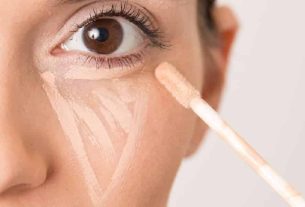To remove the lemon stain from your skin, it is recommended to wash your skin with soap and water, apply a cold compress, apply a repairing ointment and use sunscreen on your skin. Furthermore, it is recommended to avoid being exposed to the sun to prevent the stain from getting darker.
The lemon stain on the skin is known as phytophotomelanosis and occurs due to the reaction of furanocoumarins present in lemon, especially psoralen, with the sun’s UV rays, which cause an allergic reaction on the skin.
As with lemon, these stains can also appear after coming into contact with the juice of other citrus fruits, as well as other foods that stain, such as parsley, celery or carrots, for example.

What to do to remove the lemon stain
To remove the lemon stain from your skin, it is recommended:
1. Wash your skin with soap and water
This is the first step and serves to eliminate the juice that is on the skin, preventing it from continuing to irritate the skin. You should use cold water and avoid washing the area with hot water, as this can worsen the inflammation. It is also important to wash with soap, using gentle movements, to ensure that all traces of the juice are removed.
2. Apply a cold compress
Placing a cold compress on the skin is a good way to reduce inflammation in a few minutes and alleviate the blemish. The ideal is to use a compress moistened with ice water, but you can also moisten the compress with iced chamomile tea, for example, which has excellent calming properties. Learn how to use chamomile to lighten blemishes.
3. Apply sunscreen to your skin
In addition to the compress, it is also important to apply sunscreen to your skin to prevent UV rays from continuing to burn the area and worsen inflammation. The ideal is to use a high protection factor (FPS) such as 30 or 50.
This step, in addition to preventing the stain from worsening, also prevents more serious burns from appearing in the area.
4. Apply a repair ointment
Ointments that help repair the skin, such as hypoglós or bepantol, for example, can help soothe the area that was stained by lemon and allow the skin to heal, preventing the appearance of more permanent stains. It is recommended to apply the ointment for 2 or 3 days in the region, only when the skin is no longer inflamed, with signs of redness and irritation, so as not to make the stain worse.
These ointments can be applied 2 to 3 times a day.
5. Avoid excessive sun exposure
Sun exposure to the area where the stain is present should also be a basic precaution, as UV rays, even without the juice, can continue to irritate the skin. Therefore, it is recommended to cover your skin when you need to go out in the sun, for at least 1 month.
When to go to the doctor
Although lemon stain can often be treated at home, there are also situations in which it is necessary to see a doctor to begin more appropriate treatment.
Some signs that may suggest that it is advisable to see a doctor are:
- Bubbles appear;
- Redness that worsens over time;
- Very intense pain or burning in the area;
- Stain that takes more than 1 month to clear.
Taking care of your health has never been easier!
In these situations, in addition to the recommended home treatment, the doctor may also prescribe the use of ointments with corticosteroids or even some aesthetic treatments to lighten the skin.
What to do for older stains
The stains caused by lemon tend to come out over time, lightening within a few months. However, it is possible to perform some techniques that alleviate the effects of blemishes on the skin and speed up the lightening process.
To completely eliminate the stain, it is best to consult a dermatologist to start a more specific treatment, which may include the use of lighteners or even pulsed light, for example. See which treatments are most used to remove skin blemishes.
One of the main forms of treatment is the use of creams and lotions with vitamin C, as it is a powerful skin lightener, which combats sun spots and acts on the formation of melanin, which is responsible for skin pigmentation. It is possible to find the vitamin in pharmacies, but they must be prescribed by a dermatologist, so that the best treatment for each skin type can be advised. See more benefits of vitamin C.
How to prevent lemon from staining
To prevent lemon from burning or staining your skin, you should wash your skin with soap and water immediately after using lemon and be careful not to cut or squeeze this fruit when outdoors.
If a lemon burn occurs, first aid should be provided by washing the skin thoroughly under cold running water, and then consult a dermatologist or go to the emergency room, which varies depending on the type of burn. See what first aid should be like for a lemon burn.

Sign up for our newsletter and stay up to date with exclusive news
that can transform your routine!
Warning: Undefined array key "title" in /home/storelat/public_html/wp-content/plugins/link-whisper-premium/templates/frontend/related-posts.php on line 12
Warning: Undefined array key "title_tag" in /home/storelat/public_html/wp-content/plugins/link-whisper-premium/templates/frontend/related-posts.php on line 13



